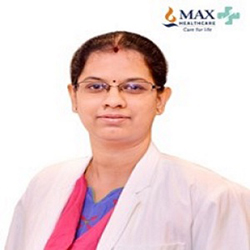
Dr. S. Veda Padma Priya
Little did she dream that the very genes that fascinated her during the pursuit of her post graduation would betray her later in life. Her euphoria of being just married had not worn off when she was detected with breast cancer. “They lived happily ever after” fairy tale dream was shattered and she was pushed onto the rollercoaster ride of chemotherapy, surgery, radiation and hormonal treatment. This story has now become commoner than before in day to day practice of any oncologist specializing in breast cancer treatment.
The recent Globacan 2018 data published by the WHO last month declares that Breast Cancer is the most common cancer in India (both sexes).It has outranked all other cancers with about 1.6 lakh new breast cancers detected every year contributing to 14 % of all cancers put together. But what is more disturbing is that breast cancer also ranks first in deaths due to all cancers. If one in 25 women are at risk of developing breast cancer in India, only one out of two breast cancer patients make it beyond 5 years after treatment. The common reasons for this abnormally high death rate are:
1. Most of the women in India present in late stages .Even though the trend is changing in the cities where women are more aware and come early for evaluation the vast majority in the whole of the country present late.
2. There is a huge disparity in healthcare facilities available between rural and urban areas.
3. The majority of women in India have neither financial independence nor insurance coverage.
4. The stigma of cancer, the promise of cure by alternative treatment, the fear of side effects of chemotherapy delay treatment in a sizable proportion of women even after diagnosis.
5. Lack of robust mammographic or any other screening programme for breast cancer in India.
6. In India the percentage of younger women with breast cancer is about 15 % i.e double that of the west. In younger women they are more aggressive, present at a later stage and may have a genetic predisposition.
Is there something that we can do about this alarming epidemic?
Yes. Definitely there is something which each of us can do to bring down the crisis.
1. Be aware of changes in the breast.
2. Avoid or Reduce the Risk.
3. Be Screened.
4. Manage your genes.
Be Aware of changes in the Breast:
The first step towards being aware of changes in the breast is Breast Self Examination. A woman needs to be aware of her breast and its changes .Any abnormal change needs expert consultation.
Signs to beware:
1. Any painless lump in the breast
2. Any recent changes in the skin of the breast (dimpling or in drawing of skin)
3. Any discharge from the nipple
4. Any lump in the arm pits
5. Changes in the shape and symmetry of the breast.
6. Orange peel appearance of the skin with redness.
7. Indrawn nipple or retraction.
Be Screened:
Screening refers to regular checkups either by a doctor or health care professional and periodic testing with x-rays of the breast. Women more than 50 years of age need yearly mammograms along with six monthly health checkups. In India because breast cancer occurs 10 years earlier in women it is more prudent to start early screening (i.e > 40 years).The biggest advantage of screening mammogram is that cancer can picked up at a stage where it not even felt and early detection improves outcomes of treatment.
Avoid or reduce Risk:
The risk factors for breast cancer are either modifiable or unmodifiable. Unmodiable risk factors are age, gender and genes. The modifiable risk factors that can be reduced or avoided are
1. High Fat Diet
2. Obesity
3. Alcohol
4. Delayed Childbirth
5. Hormonal pills.
Manage your Genes:
About 10 % of breast cancers are hereditary. They are capable of passing on from one generation to another. Even though a number of genes are implicated the most common are BRCA 1 & 2.Mutations in these genes increase the lifetime risk of breast cancer to 50 to 80 % by age 75.It is important to know if you harbor these genes and if so take measures to reduce the risk ,
1. Increased surveillance: MRI of the breasts yearly in addition to mammogram.
2. Chemoprevention: Tamoxifen or Raloxifene daily halves the risk of breast cancer.
3. Risk reducing surgeries: Either removal of both ovaries or breasts or both reduces the risk of breast cancer in the high risk women.
Dr. S. Veda Padma Priya is a Senior Consultant - Breast Oncology, Max Super Speciality Hospital, Shalimar Bagh